What's New
Displaying results 2571 - 2580 of 4914

Resource | Laws and Policies,
Data from the DOH - Epidemiology Bureau shows that only 44% of all people diagnosed with HIV from 2010 to 2015 were started on Anti-Retroviral Therapy (ART). Based on the 2013 external evaluation of the health sector's response to HIV in the Philippines, long turn-around time of confirmatory HIV testing is one of the identified barriers for prompt referral and management. In the interim, this memorandum shall ensure linkage to care of clients with reactive HIV screening test to immediately be assessed by treatment hubs, satellite treatment hubs and HIV primary care clinics in order to provide early treatment and management.
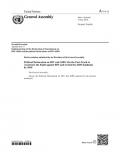
Resource | Laws and Policies,
A progressive, new and actionable Political Declaration on Ending AIDS has been adopted by Member States at the United Nations General Assembly High-Level Meeting on Ending AIDS, taking place in New York, United States of America. The Political Declaration includes a set of specific, time-bound targets that must be reached by 2020 to end the AIDS epidemic by 2030 within the framework of the Sustainable Development Goals.

Resource | Videos,
Key Affected Women and Girls bear the most burden for the HIV epidemic in the Asia Pacific. The Sustainable Development Goals aim for more inclusive polices and approaches, but much remains in terms of implementation. Women in this video speak on the challenges and what needs to be done.

Resource | Videos,
Thailand has received validation for having eliminated mother-to-child transmission of HIV and syphilis, becoming the first country in Asia and the Pacific region and also the first with a large HIV epidemic to ensure an AIDS-free generation. Meet Anya Nopalit, a mother living with HIV who has two HIV-negative children.
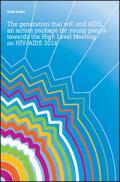
Resource | Tools,
The United Nations High Level Meeting on HIV/AIDS (HLM) will take place on June 8–10, 2016 in New York City. The HLM aims to "undertake a comprehensive review of the progress achieved in realizing the Declaration of Commitment on HIV/AIDS and the Political Declarations on HIV/AIDS." This important global convening will bring civil society organizations, people living with HIV, governments, and decision-makers together to renew the commitment and engagement of global leaders to accelerate a comprehensive universal and integrated response to HIV.
In this document you will find information about the High Level Meeting on HIV/ AIDS (HLM) 2016, including what happens before, during and after the meeting as well as what you can do even if you aren’t able to attend the actual meeting in New York. This document has been prepared by and for young people but is also intended for use by civil society more broadly, who we hope will also find it useful.
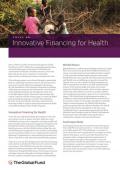
Resource | Publications,
Smart, effective health investments through the Global Fund have saved 17 million lives, expanding opportunities and achieving greater social justice for families and communities worldwide. Scientific advances, innovative ideas and private sector expertise are unlocking improvements in disease prevention, treatment and care.
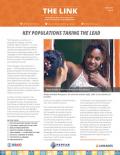
Resource | Publications,
In many countries, men who have sex with men, sex workers, transgender people, and people who inject drugs are taking the lead to ensure that their peers receive the services they need. This issue of The Link highlights some of these efforts as it examines the promise of peer-led and peer-assisted interventions designed to increase access to and uptake of HIV prevention, care, and treatment services.

Resource | Tools,
Vihaan HIV-TB training module is developed in coordination with NACO and the Central TB Division to build the capacity of the staff of the programme’s Sub Recipient partner organizations who in turn will train the staff of CSCs to address this key health priority. This training module covers the skills and strategies required in Vihaan staff at every level to ensure that HIV-TB co-infection is promptly and properly addressed. While emphasis is made on responding to the needs of clients at service level, the module will also describe coordination mechanisms developed at national, state and district level.
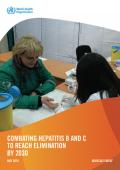
Resource | Publications,
In 2013, viral hepatitis was a leading cause of death worldwide (1.46 million deaths, a toll higher than that from HIV, tuberculosis or malaria, and on the increase since 1990). More than 90% of this burden is due to the sequelae of infections with the hepatitis B virus (HBV) and hepatitis C virus (HCV).
Prevention can reduce the rate of new infections, but the number of those already infected would remain high for a generation. In the absence of additional efforts, 19 million hepatitis-related deaths are anticipated from 2015 to 2030. Treatment now can prevent deaths in the short- and medium term.

Resource | Publications,
This booklet includes a popular version of the violence against women and girls section of The global plan of action to strengthen the role of the health system within a national multisectoral response to address interpersonal violence, in particular against women and girls, and against children.





